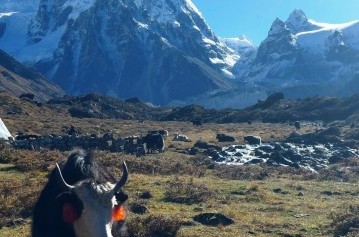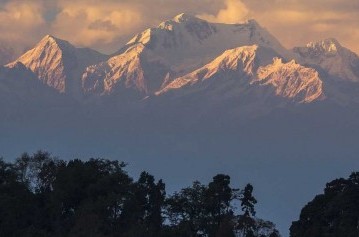
Kanchenjunga Region: Explore the Queen of Mountains
The Kanchenjunga Region is one of the most spectacular areas in Nepal, offering breathtaking landscapes, towering Himalayan peaks, and rich biodiversity. Dominated by Mount Kanchenjunga, the third highest peak in the world at 8,586 meters, this region stands on the Nepal-Sikkim border, boasting lush forests and rivers cascading from its flanks. Known as the "Queen of Mountains," Kanchenjunga provides trekkers with an unparalleled adventure through varied ecological zones, from subtropical forests to glacial wilderness.
Why Trek in Kanchenjunga Region?
1. Mount Kanchenjunga
- Majestic Peaks: Mount Kanchenjunga, standing at 8,586 meters, is the third highest mountain in the world, offering stunning views and a challenging trekking experience.
- Glacier Wilderness: The mighty Kanchenjunga Glacier is a major attraction, providing trekkers with awe-inspiring glacial landscapes.
2. Diverse Ecological Zones
- Subtropical to Glacial: The region encompasses a range of ecological zones, from lush subtropical lands to the icy wilderness of the high Himalayas.
- Flourishing Flora and Fauna: Kanchenjunga is home to diverse flora and fauna, including the world’s largest natural rhododendron forest with the highest number of rhododendron species on Earth.
3. Cultural Richness
- Limbu Cultural Trail: Explore the Limbu cultural trail and gain insights into the rich Himalayan lifestyle and traditions.
- Ethnic Diversity: The region is predominantly inhabited by the Limbus, with settlements of Tibetans, Sherpas, Rais, Gurungs, Magars, Newars, Sunwars, and Tamangs of Tibeto-Mongolian origin.
Popular Trekking Routes
- Kanchenjunga Base Camp Trek
- Duration: 20-25 days
- Difficulty: Strenuous
- Highlights: Trek to both the North and South Base Camps of Kanchenjunga, offering spectacular mountain views, pristine landscapes, and encounters with diverse wildlife.
- Pathibhara Trek
- Duration: 7-10 days
- Difficulty: Moderate
- Highlights: A spiritual journey to the sacred Pathibhara temple, combined with stunning views of the Kanchenjunga range and exploration of local culture.
Essential Information
Best Time to Visit: The ideal times for trekking in the Kanchenjunga Region are from late March to May and from September to early November, when the weather is clear and stable.
Permits: Trekkers need a Kanchenjunga Conservation Area Permit (KCAP) and a TIMS (Trekkers' Information Management System) card. Additional permits may be required for restricted areas.
Accommodation: Accommodation ranges from basic teahouses to camping, especially in more remote areas. Trekkers should be prepared for rustic conditions.
Packing List:
- Sturdy trekking boots
- Warm clothing and layers
- Reliable map and compass
- Personal medication and a first aid kit
- A good quality sleeping bag
- Trekking poles
- Sunscreen and sunglasses
Embark the Kanchenjunga Region's extraordinary trekking experience, combining the challenge of high-altitude trekking with the beauty of one of Nepal's most remote and spectacular landscapes. Whether you're exploring the new trekking trails like Pathibhara and the Limbu cultural trail or trekking to the base camps of the majestic Kanchenjunga, this region promises an unforgettable adventure filled with cultural richness and natural splendor. Embark on a journey to the Queen of Mountains and discover the awe-inspiring beauty and diversity of the Kanchenjunga Region.
Experience the Kanchenjunga Region Trek with Asian Adventure Treks & Expedition - Professional Planner for your vacations!
Featured trips for Kanchenjunga Region
Easy trekking are basically for the beginners. This kind of treks is typically done in the lower hilly region of elevation below 3500 metre. The trails in this trek are generally vertical and walking time is 3 - 5 hours everyday.
Moderate types of trekking generally take place on the low altitude zone crossing the passes below the elevation of 4500 meters. Normally the walking is from 4 - 6 hours each day.
Hard kind of trekking routes crosses through the wild and adventurous trails and sometimes passes through the snow covered high passes between 4500 meters to 5500 meters. Usually the walks takes from 7-8 hours everyday.
Generally this types of routes are demanding long distance treks where the walks takes up to 9 hours each day. Each trail crosses at least one pass over 5500 meters frequently contains hardly ever explored regions. Challenging are the expedition types of activity.

